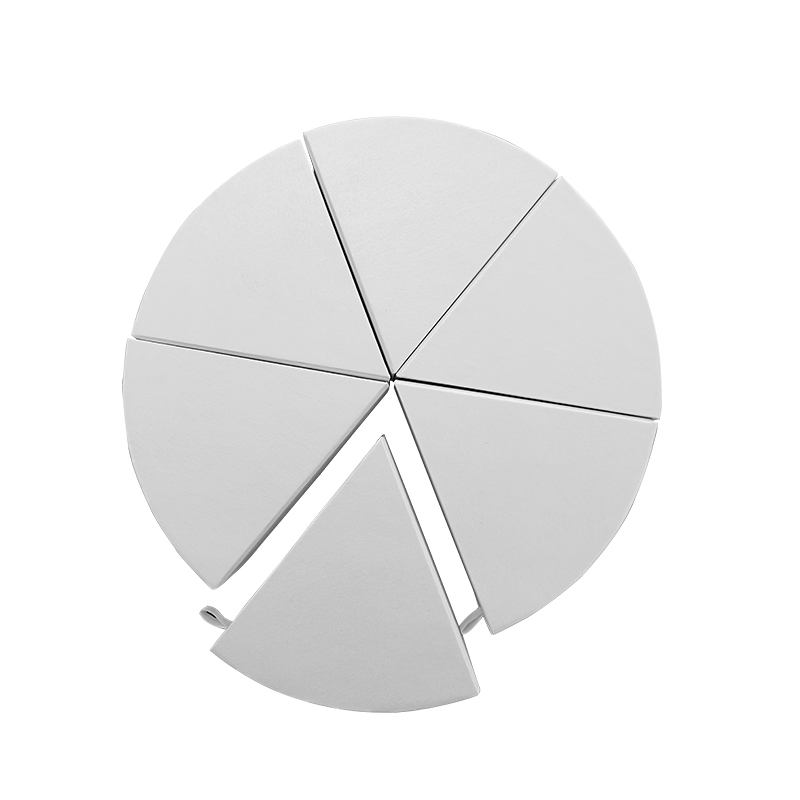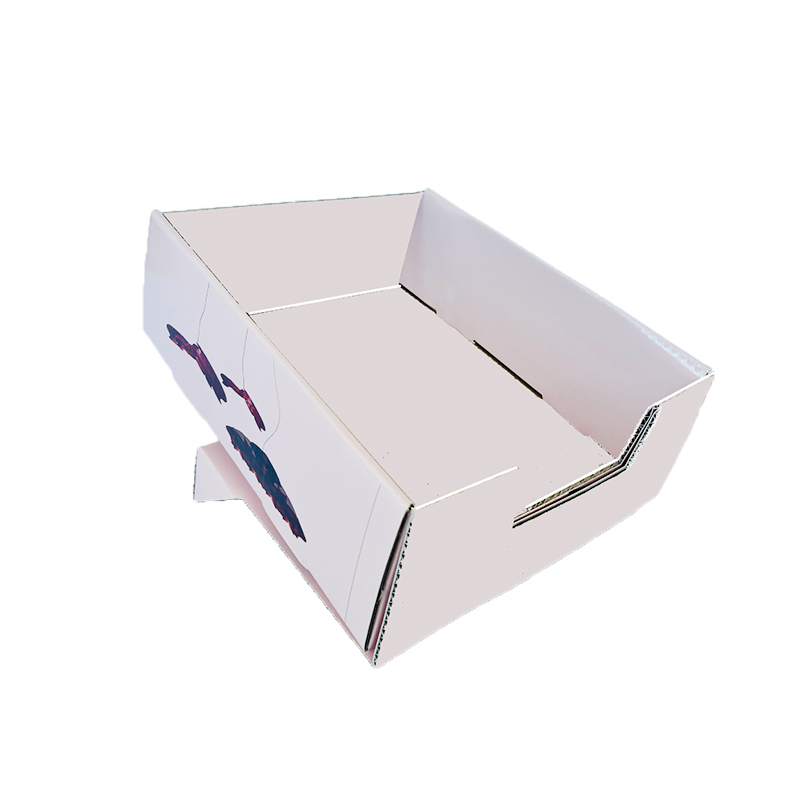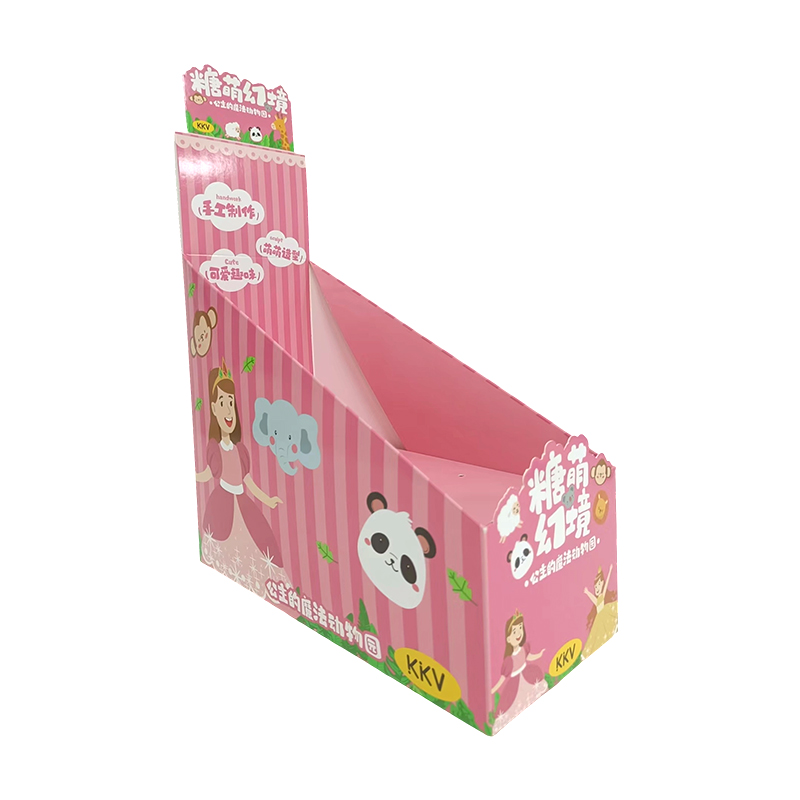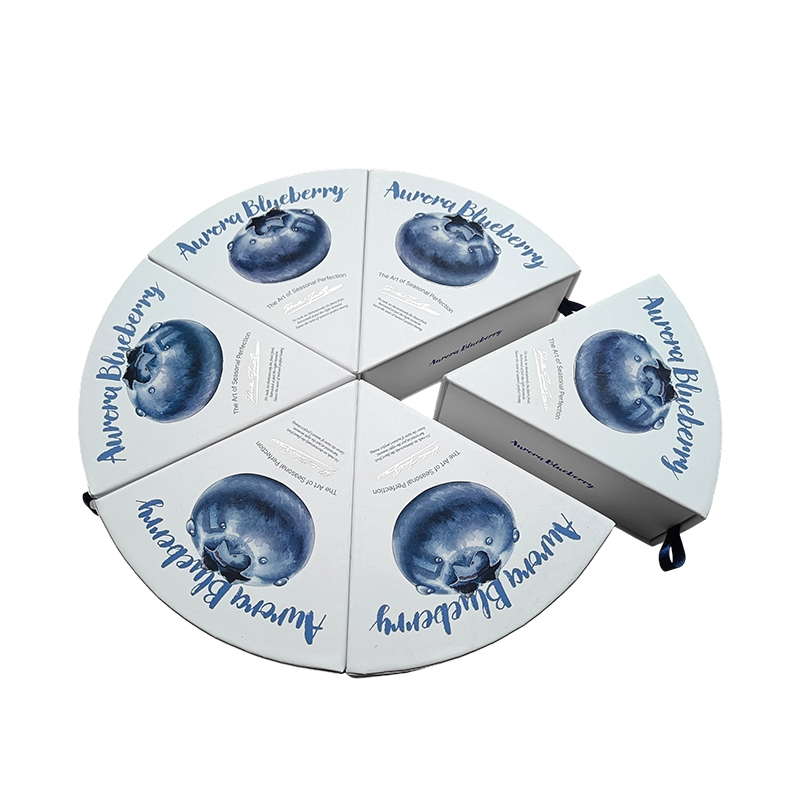Corrugated packaging carton containers are more than just simple boxes; they are the unsung heroes of logistics, commerce, and everyday life. From safeguarding delicate electronics during transit to ensuring the freshness of produce, these versatile containers play a pivotal role across a multitude of industries, including logistics, food and beverage, and e-commerce. Their importance lies in their ability to provide robust protection, facilitate efficient transportation, and even serve as a powerful tool for brand promotion.

Paper Fan-Shaped Assembly And Packaging Round Gift Box (Composed Of Six Fan-Shaped)
What is Corrugated Packaging?
At its core, corrugated packaging is a material made up of three layers of paper: an inside liner, an outside liner, and a fluted (arched) layer in between. This unique structure provides remarkable strength and cushioning. The custom corrugated carton packaging solutions available today can vary significantly in their construction:
- Single-wall corrugated: Consists of one fluted layer between two liners, commonly used for lighter goods.
- Double-wall corrugated: Features two fluted layers between three liners, offering increased strength for heavier or more fragile items.
- Triple-wall corrugated: Composed of three fluted layers between four liners, designed for exceptionally heavy or delicate products requiring maximum protection.
The materials used also contribute to the packaging's performance and sustainability. Common types include Kraft paper, known for its high strength and virgin fiber content, and recycled paper, which offers an eco-friendly corrugated packaging boxes option.
Main Types of Corrugated Boxes
The diverse needs of various industries have led to the development of several specialized types of corrugated boxes:
- Regular Slotted Container (RSC): This is the most common and economical box style, where all flaps are the same length, and the two outer flaps meet at the center of the box. They are widely used as best corrugated boxes for shipping for a vast array of products.
- Heavy-Duty Corrugated Boxes: Engineered for maximum durability and load-bearing capacity, these containers are essential for shipping large, bulky, or high-value items. They are often referred to as heavy duty corrugated packaging containers and are crucial in industries requiring robust protection.
- Custom Printed Corrugated Boxes: These boxes go beyond mere functionality, serving as a powerful branding and marketing tool. With advancements in printing technology, businesses can now achieve high-quality graphics and branding directly on their packaging.
- Food-Grade Corrugated Packaging: Specifically designed to meet strict hygiene and safety standards, this type of packaging is essential for the food and beverage industry. Corrugated packaging for food industry ensures products remain safe and uncontaminated from production to consumption.
How to Choose the Right Corrugated Box?
Selecting the appropriate corrugated box is crucial for effective product protection, cost efficiency, and customer satisfaction. The decision process should consider several key factors:
- Based on Usage: The intended application dictates the type of box needed. For shipping, factors like transit distance, handling, and potential environmental stressors (humidity, temperature) are paramount. For retail display, aesthetics, branding opportunities, and ease of opening are important. For storage, stackability, moisture resistance, and long-term durability are key.
- Strength and Load-Bearing Capacity: Two primary tests determine a corrugated box's strength:
- ECT (Edge Crush Test): Measures the edgewise compressive strength of the board, indicating its stacking strength. A higher ECT value means greater resistance to crushing when stacked.
- Mullen Test (Bursting Strength Test): Measures the force required to puncture the board, indicating its ability to withstand rough handling and protect contents from bursting through. Choosing between ECT and Mullen depends on the specific needs of your product and shipping environment.
- Size and Structure Optimization: Customizing the dimensions and structure of the box can lead to significant cost savings, especially in shipping. Optimizing box size to minimize void filler and maximize pallet utilization can reduce freight costs. Collaborating with wholesale corrugated carton suppliers can help businesses find the most efficient and cost-effective packaging solutions tailored to their specific products.
Environmental and Sustainability
The packaging industry is increasingly focusing on sustainability, and corrugated packaging is at the forefront of this movement.
- Advantages of Recyclable Corrugated Boxes: Corrugated cardboard is inherently recyclable, making it an environmentally friendly choice. Recyclable corrugated packaging options reduce landfill waste, conserve natural resources, and decrease energy consumption compared to producing virgin materials.
- Biodegradable Coating Technologies: Innovations in packaging materials include the development of biodegradable coatings. These coatings can enhance the functionality of corrugated boxes (e.g., water resistance, grease resistance) while ensuring the packaging remains fully compostable or biodegradable after use, further reducing environmental impact.
- How Businesses Can Reduce Packaging Waste: Companies can implement various strategies to minimize packaging waste, such as:
- Right-sizing packaging: Using only the necessary amount of material to protect the product.
- Using recycled content: Prioritizing boxes made from a high percentage of post-consumer recycled materials.
- Promoting reusability: Designing packaging that customers can easily reuse for other purposes.
- Partnering with sustainable suppliers: Choosing wholesale corrugated carton suppliers who prioritize environmentally responsible manufacturing processes.
Corrugated Box Printing and Brand Promotion
Beyond its protective function, corrugated packaging serves as a powerful marketing and branding tool.
- Common Printing Technologies:
- Flexography (Flexo Printing): A widely used method for corrugated, offering cost-effectiveness for large runs and quick-drying inks. It's excellent for bold graphics and brand logos.
- Offset Lithography (Offset Printing): Provides high-quality, detailed images and vibrant colors, often used for retail-ready packaging where visual appeal is paramount. It involves printing on a separate liner which is then laminated onto the corrugated board.
- Digital Printing: Offers flexibility and cost-effectiveness for short runs, custom designs, and variable data printing. It's ideal for personalized packaging and rapid prototyping.
- How to Design Attractive Packaging: Effective packaging design goes beyond just placing a logo. It involves:
- Brand Consistency: Ensuring the packaging reflects the brand's identity, colors, and messaging.
- Visual Appeal: Using compelling graphics, typography, and imagery to capture attention.
- Informative Content: Including essential product information, usage instructions, and certifications.
- Unboxing Experience: Designing the packaging to create a memorable and positive experience for the customer upon opening.
- Corrugated box printing services play a crucial role in bringing these designs to life, transforming a simple box into a powerful brand ambassador.



 Français
Français Español
Español عربى
عربى






